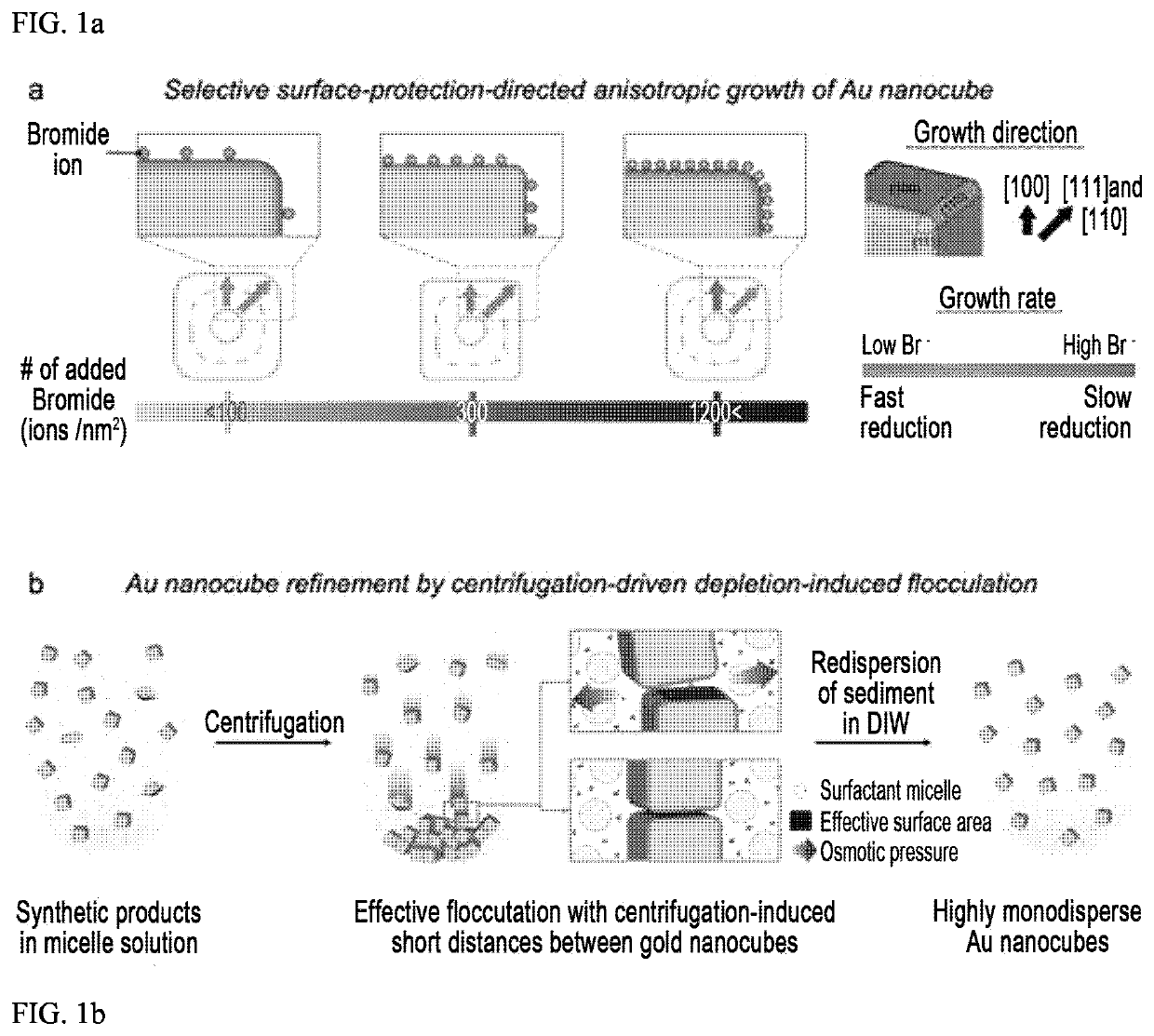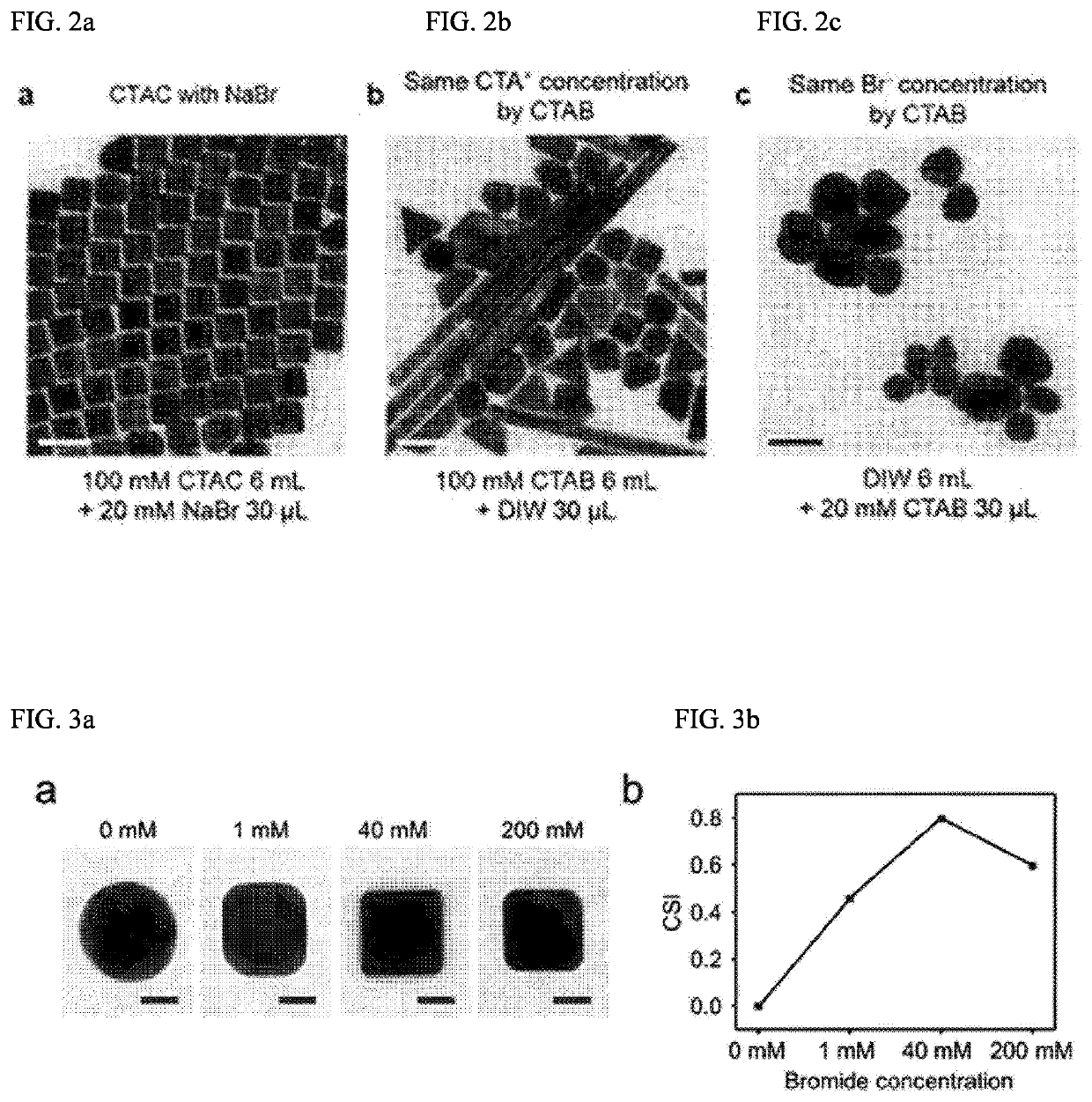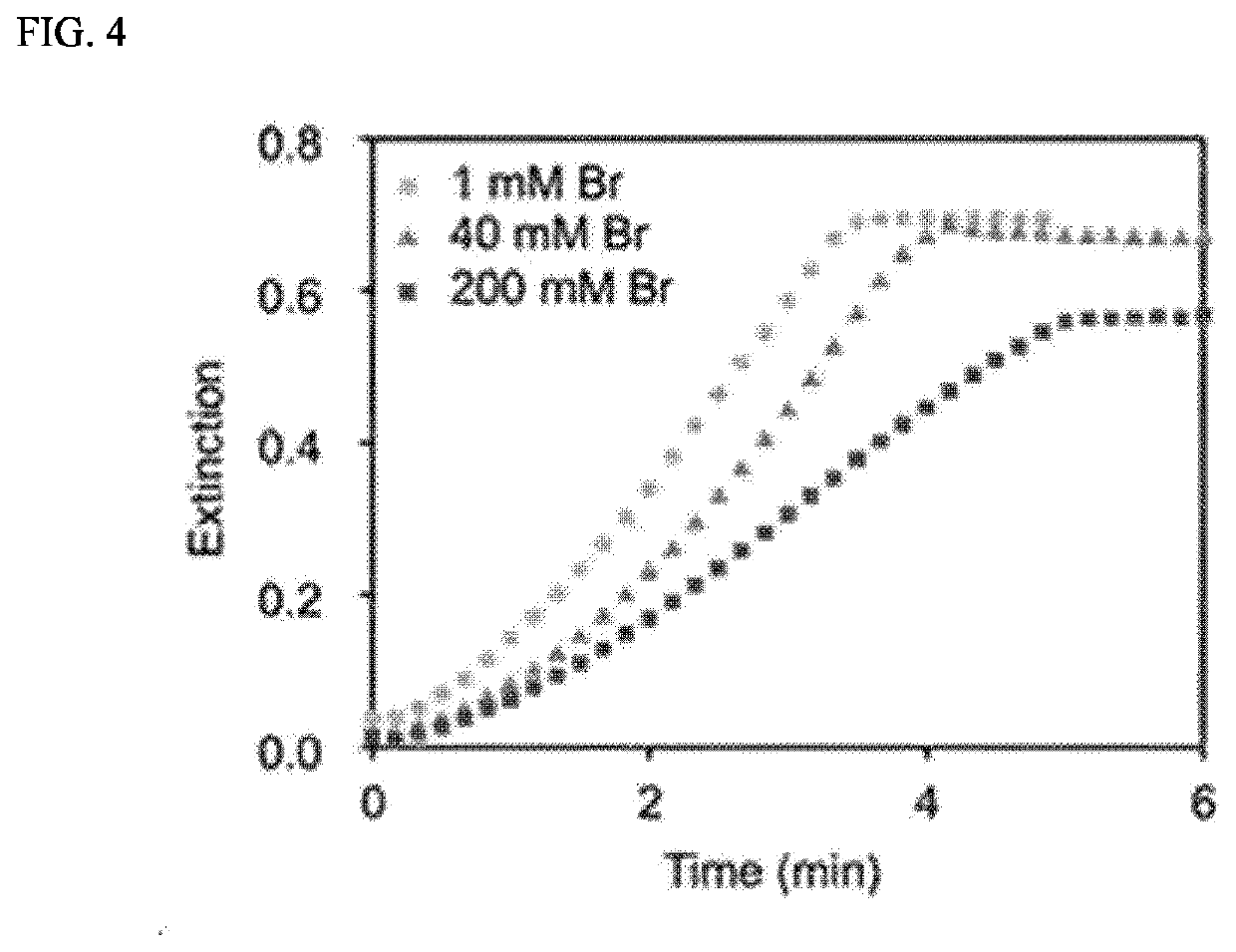Method for Preparing Metal Nanocube with Controlled Corner Sharpness Index
- Summary
- Abstract
- Description
- Claims
- Application Information
AI Technical Summary
Benefits of technology
Problems solved by technology
Method used
Image
Examples
preparation example 1
Synthesis of Nanosphere Seeds with 10 nm Diameter
[0076]CTAC-capped 10 nm gold nanospheres were synthesized according to the protocol disclosed by Zheng, Y. et al. (Part. Part. Syst. Charact., 2014, 31: 266-273). All solutions were prepared based on DIW. First, CTAB-capped seeds with a size of 1 nm to 2 nm were prepared. To synthesize these seeds, 9.75 mL of a 100 mM CTAB solution was mixed with 250 μL of a 10 mM HAuCl4 solution inside a 50 mL round-bottom flask. Subsequently, 600 μL of a freshly prepared ice-cold 10 mM NaBH4 solution was quickly added thereto. The resulting solution was mixed for 3 minutes and stored at 27° C. for 3 hours before the next step. Then, 10 nm gold nanospheres were synthesized with the seeds prepared as described above. 2 mL of 200 mM CTAC, 1.5 mL of 100 mM ascorbic acid, and 50 μL of the previously prepared CTAB-capped seed solution were sequentially mixed inside a 10 mL vial. 2 mL of a 0.5 mM HAuCl4 solution was injected thereinto with a single shot wh...
example 1
Synthesis of Nanocubes with Controlled Size and / or Shape
[0077]The synthesis of nanocubes (NC) was performed in 20 mL glass vials. These vials were cleaned with acetone and DIW before use. In each vial, 100 mM CTAC (6 mL) was mixed with sodium bromide (30 μL) at an appropriate concentration as described in Table 1 below. The previously prepared 10 nm seed solution was diluted to have an OD of 5.6 at 520 nm, and was added thereto in a volume indicated in Table 1 below. A 10 mM ascorbic acid solution (390 μL) was added thereto and mixed thoroughly. Finally, a 0.5 mM HAuCl4 solution (6 mL) was added thereto with a single shot while mixing the solution at 500 rpm. The resulting solution was incubated with mixing for 19 minutes, and then centrifuged and redispersed in DIW twice.
example 2
Refinement of Nanocubes
[0078]The nanocubes synthesized according to Example 1 were precipitated by centrifugation.
[0079]The precipitate was redispersed in a 10 mM CTAB solution such that the resulting solution could have a two-fold concentration compared to the original nanocube solution. A calculated amount of the stock solution of benzyldimethyldodecylammonium chloride (BDAC, Sigma-Aldrich) and DIW was added thereto so as to obtain the same nanocube concentration along with an appropriate BDAC concentration for each sample as described in Table 1 below. DIW was added thereto so as to prevent the occurrence of unwanted flocculation.
[0080]The solution was mixed and centrifuged according to appropriate conditions. Since 18R and 17S were too small to be aggregated, they were excluded from the purification process. 37R and 32R were centrifuged at 1,000 rpm for 10 minutes. Other samples were centrifuged at 500 rpm for 5 minutes. The supernatants were removed with a micropipette, and the...
PUM
| Property | Measurement | Unit |
|---|---|---|
| Length | aaaaa | aaaaa |
| Length | aaaaa | aaaaa |
| Length | aaaaa | aaaaa |
Abstract
Description
Claims
Application Information
 Login to View More
Login to View More - R&D
- Intellectual Property
- Life Sciences
- Materials
- Tech Scout
- Unparalleled Data Quality
- Higher Quality Content
- 60% Fewer Hallucinations
Browse by: Latest US Patents, China's latest patents, Technical Efficacy Thesaurus, Application Domain, Technology Topic, Popular Technical Reports.
© 2025 PatSnap. All rights reserved.Legal|Privacy policy|Modern Slavery Act Transparency Statement|Sitemap|About US| Contact US: help@patsnap.com



